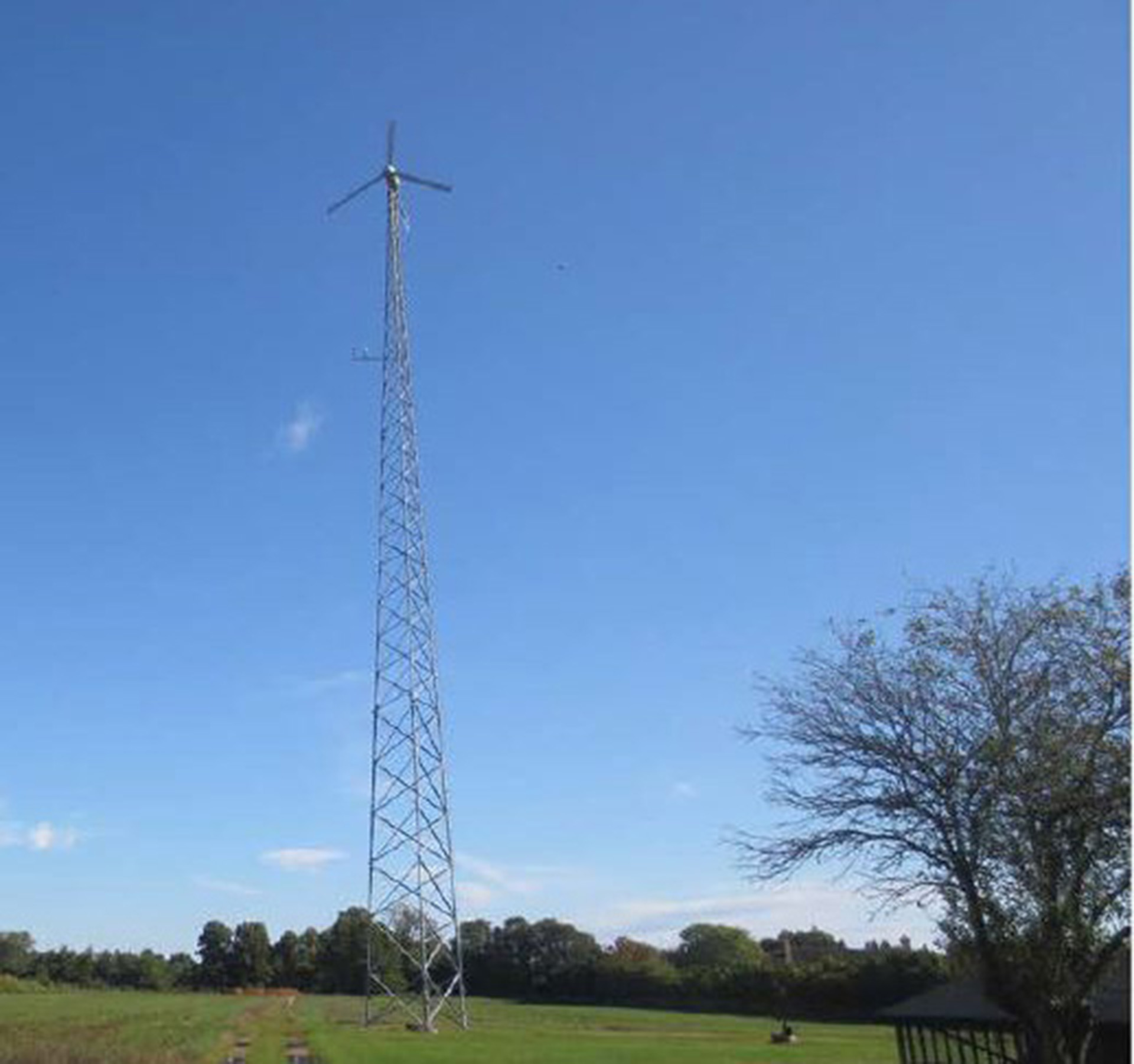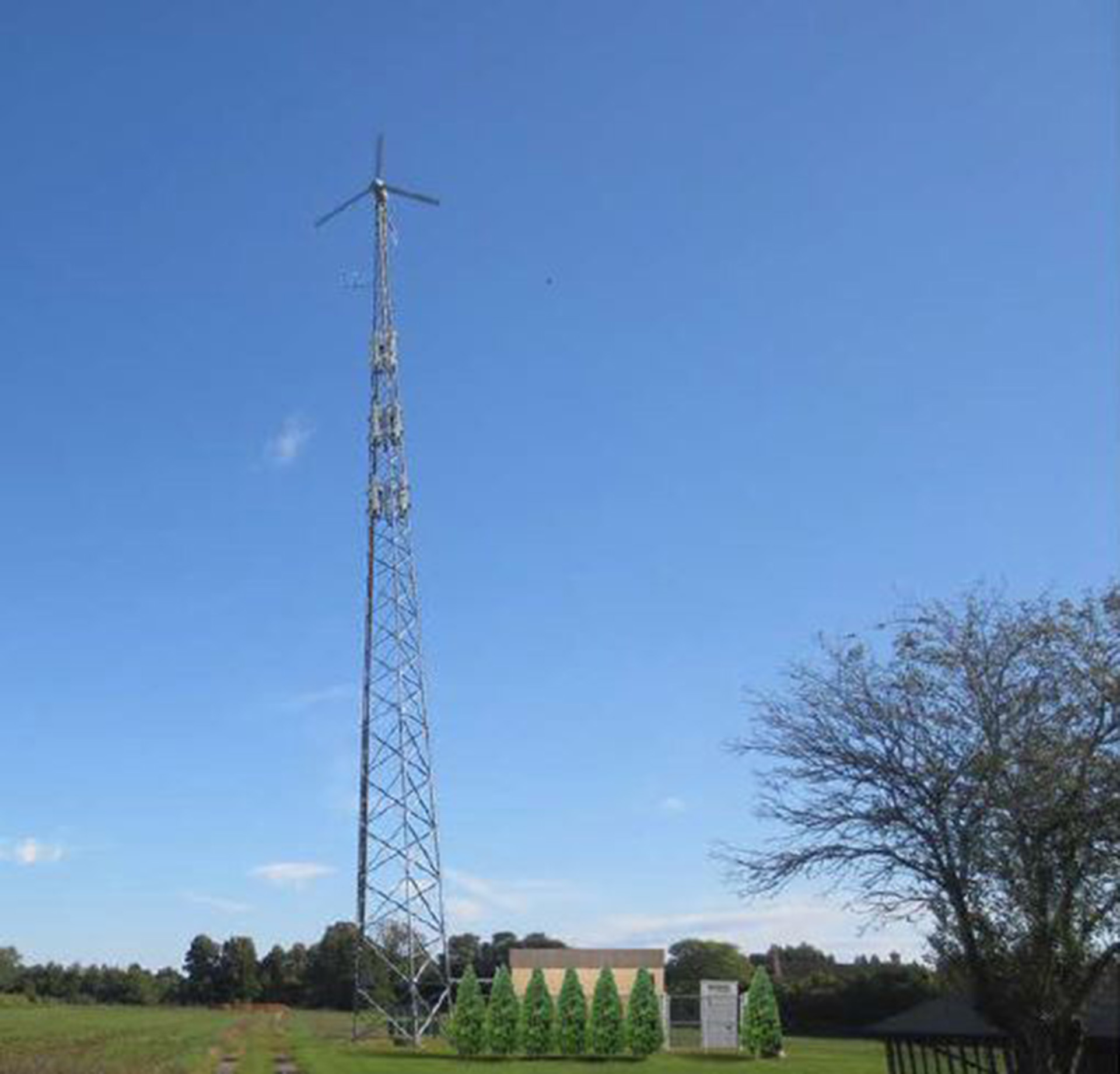Northwest Woods Cell Tower In Legal Peril?



The legal clock that will free AT&T of any obligation to East Hampton town to build a proposed and already approved 185-foot-tall monopole cell phone tower at the old Northwest Woods brush dump site on Old Northwest Road and, instead, allow AT&T to return to its preferred site, Iacono Farm on Long Lane, appears to have started ticking, as of February 18.
AT&T prefers the Iacono Farm site, according to an attorney for the communications giant, Kimberly Nason, because it would be far less expensive to mount cell signal antennas on the property’s existing 120-foot-tall wind turbine tower, rather than constructing the monopole at the Northwest Woods site. Nason said as much during one of the hearings that were part of the hyper-accelerated 60-day approval process by the town for the Northwest Woods site.
The communications company needs the additional antennas because of a void in coverage across East Hampton, particularly in the Northwest Woods area.
AT&T had proposed to the East Hampton Town planning board in 2015 that it mount antennas at between 75 feet and 95 feet off the ground on the wind turbine at Iacono. Over the next couple of years, AT&T fine-tuned this proposal, agreeing with planning board requests to mount the antennas flush to the lattice tower, and to color the antennas so that they would blend in with either the lattice tower or the sky, with choice of color to be made by the town.
Despite these modifications, in 2016, the planning board made a positive declaration under the New York state’s Environmental Quality Review Act on the Iacono Farm proposal, meaning it would have a major impact on the area around Iacono Farm. That finding forced AT&T to generate a 279-page environmental impact statement, which it delivered to the planning board in January 2017 and was modified in March of that year. In the end, a divided planning board rejected the proposal.
AT&T sued the town and its planning and architectural review boards in federal court, citing the Federal Communications Act of 1996. The town brought in outside counsel, Kelly Wright, and capitulated, signing off on a settlement of the lawsuit that heavily favors the plaintiff.
The communications company agreed in the settlement to build the monopole tower at the brush dump site and even allow the town to mount much needed emergency response antennas at the top of the 185-foot structure, but with two major caveats.
Clauses
First, the town had to issue all needed permits for the Northwest Woods site within 60 days after receiving AT&T’s application, or AT&T could consider that brush dump application as having been denied. Under the settlement, AT&T would then move back to Iacono. The application that the planning board rejected in 2017 would be recognized by the federal court as having been fully approved, and binding on the town.
The town made it through the 60-day approval window, barely. The planning board, which had forced AT&T to do an EIS for the Iacono Farm proposal, did not ask for one assessing the tower in Northwest Woods’ impact on the surrounding neighborhood, despite the fact that it will rise 145 feet over the tree line, according to AT&T’s application. Board members were clearly troubled by the new proposal, but still voted 4-3 to approve it. That vote came just days before the deadline would have lapsed. A building permit was issued for the project on February 18.
That was the easy part.
Another clause in the settlement states that if the town or its planning or architectural review boards’ “authority . . . to have approved the brush dump facility” is challenged in court, and that challenge is not resolved in 90 days of the date of approval, AT&T, without consulting with the town, can dump the brush dump site and begin work at Iacono Farm, installing its antenna, with the town having no say on the matter.
The lawsuits challenging the town’s authority to approve the brush dump site are beginning to roll out this week. Attorney Andrew Campanelli said Monday that he has been retained by nine of the neighbors who live near the brush dump site. It was his intent to file an article 78 lawsuit in State Supreme Court in Riverhead by February 27 against East Hampton town and its zoning board of appeals, which issued variances regarding the distance of the proposed Northwest Woods tower to neighboring residences.
That suit is to be followed by another article 78 suit in state court, to be filed within the next two weeks, against the town’s planning board, Campanelli said. After that, he said, is yet another suit, this one in federal court, claiming the town’s rushed approval process denied his clients their First Amendment right “to petition the government” for redress against the damage the proposed monopole cell tower will cause them.
New Deadline
Campanelli said the actions of the town are directly injuring his clients, who, according to his experts, will see the value of their properties decrease “$750,000 to $1.1 million, each.” He called the town’s rushed public hearings regarding the brush dump site before the town’s planning and architectural review boards, as well as the ZBA, “kangaroo hearings.”
Because of the wording of the clause in the settlement regarding legal action, the duration of the 90-day period in which all litigation must end does not begin on the date the first lawsuit is filed: rather, according to the language of the clause, it is retroactive, starting at the time the approval for the brush dump site was issued by the town. The building permit was issued on February 18, so it appears that the final deadline for all litigation to end is on or about May 18.
Article 78 lawsuits are generally not resolved in a matter of days. In fact, there are several such lawsuits against the town currently being litigated in state court that have lasted for years, with no end in sight, such as that of the owner of Duryea’s Dock, Marc Rowan.
Campanelli said he is not going to seek a temporary restraining order to stop the erection of the Northwest Woods tower. That is because, he said, if AT&T proceeds with building the tower, and the courts find against the town, there will be a simple remedy for the court to order to repair the damage done to his clients: tear the tower down.
The Independent reached out to both Wright and Nason for comment on February 21. Wright had not responded as of the evening of February 24. A spokeswoman for AT&T, Brandy Bell-Truskey, did contact The Independent, saying that she could not immediately comment on the matter.
The clock, it appears, is ticking.
t.e@indyeastend.com



